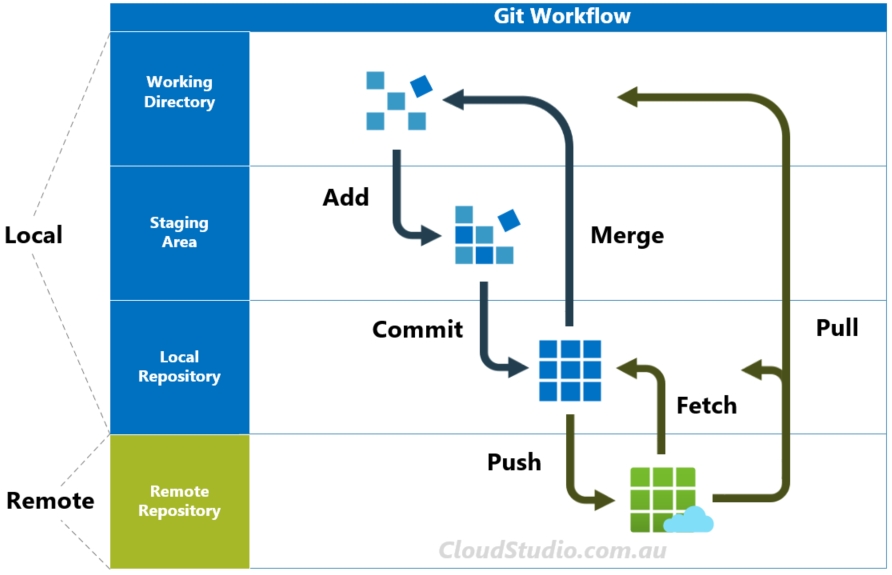135.3 Using Git in an IDE and CLI
Compare using Git from within your IDE and from the command line, and learn how to switch between both in a typical development workflow.
The diagram below demonstrates the Git workflow and the key commands. In this topic, we focus on initiating these commands from the CLI and/or the IDE.

IDE vs CLI: Two ways to use Git
You can use Git in two main ways:
Inside your IDE (e.g. PyCharm, VS Code) Buttons, menus, and file change indicators help you use Git visually.
Using the command line (CLI) You type Git commands directly into a terminal.
Both approaches serve the same purpose—but understanding both provides you with flexibility and confidence as a developer.
Git in an IDE
Most modern IDEs come with Git integration. You can:
See which files have changed
Add files to a commit with a tick box
Type a commit message and press "Commit"
Push and pull with a single button
View history and branches visually
Advantages
Beginner-friendly
Less risk of syntax errors
Useful during merge conflicts or reviews
Example: Git in PyCharm
Changes tab shows files that have been edited
Green tick = tracked and unchanged
Blue = modified
+ = new untracked file
Click Commit to stage and commit
Use the Git menu to push and pull
Git in the command line
The CLI gives you complete control over Git and works in any environment (even without an IDE). You use short commands to manage version control:
Advantages
Works in any terminal, even without an IDE
Easier to learn scripting and automation
Required for some advanced Git features
Common Git commands
git init
Create a new Git repo
git status
Show file changes
git add <file>
Stage file(s) for commit
git commit -m "Message"
Save changes with a message
git push origin <branch>
Upload changes to GitHub
git pull origin <branch>
Download changes from GitHub
git log
View commit history
Switching between them
It’s common to use both the CLI and IDE depending on the task:
Use your IDE for everyday changes, commits, and merges.
Use the CLI when:
The IDE doesn’t support a command (e.g.
git stash)You’re scripting or working remotely
You need to fix complex issues
Both tools use the same Git repository, so you can switch between them any time.
Summary
Your IDE simplifies Git workflows with buttons and menus.
The CLI gives you complete control through Git commands.
Both work on the same project and can be used together.
Learning both makes you a more flexible and confident developer.
Last updated
Was this helpful?